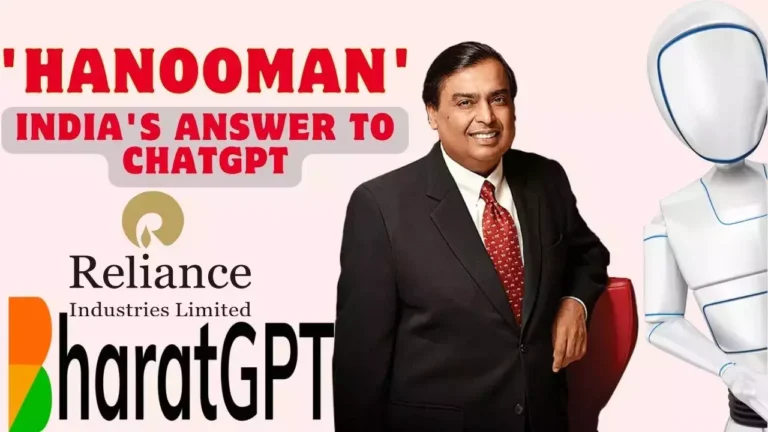Indian tycoon Mukesh Ambani, the visionary behind Reliance Industries, has spearheaded India’s entry into the competitive AI arena. Through his entity Seetha Mahalaxmi Healthcare (SML), in partnership with esteemed institutions like IIT Bombay and eight other Indian Institutes of Technology, Ambani has launched “Hanooman,” a suite of extensive language models (LLMs) meticulously trained on 22 Indian languages. The ambitious “BharatGPT” initiative aims to democratise AI by overcoming linguistic barriers and making it accessible to India’s diverse user base.
On February 1, 2024, Mukesh Ambani, chairman of Reliance Industries, introduced Hanooman, an Indian AI model positioned as a potential competitor to ChatGPT. This announcement signifies a significant stride in India’s AI ambitions, addressing the limitations of existing language models and catering to the distinctive linguistic landscape of the country.
Distinguishing itself from conventional language models, Hanooman brings more to the forefront than just textual capabilities. Its multimodal AI features enable content generation and analysis across various media, encompassing text, speech, and even video. Hanooman can assist in seeking healthcare advice in one’s native or local language, deliver personalised video responses, and create educational content tailored to diverse learning styles.
The initial wave of Hanooman models, ranging from 1.5 billion to an impressive 40 billion parameters, is set to be released next month. Crucially, these models will be open source, enabling developers and academics to build upon them and craft specific applications for different domains.
Hanooman: Revolutionizing AI for India’s Diverse Linguistic Landscape
India’s multitude of languages poses a considerable challenge for AI development. Hanooman, backed by RIL, tackles this challenge by supporting 11 Indian languages, including Hindi, Tamil, Telugu, Malayalam, and Marathi. The AI aspires to incorporate all 22 Indian languages, revolutionising access to information and communication for millions who face challenges in communicating in English, while also enabling them to use AI in their native languages. Focusing on Indian languages positions Hanooman to bridge the digital divide and make AI accessible to a wider audience in India. The model’s capabilities can catalyse innovation across various sectors, fostering new products, services, and solutions. Hanooman has the potential to significantly contribute to the development of Indian language processing technologies, benefiting research and education.
The impact of Hanooman extends beyond basic translation services. Visual chatbots offer seamless customer assistance in local languages, empowering users in healthcare, governance, financial services, and education. The possibilities are vast. As BharatGPT’s Hanooman prepares for its grand debut, India stands on the brink of a transformative AI revolution that promises inclusivity, innovation, and empowerment, according to Data Quest.
The introduction of Hanooman marks a promising initial phase for an AI model centred on India. However, its journey has just commenced. Success will hinge on addressing challenges, collaborating with stakeholders, and continually adapting to meet evolving user and industry needs. It is crucial to recognise that the model is still in development, and its capabilities and impact will become clearer over time. Further details on data privacy measures, specific functionalities, and rollout plans are expected to be unveiled in the coming months.


